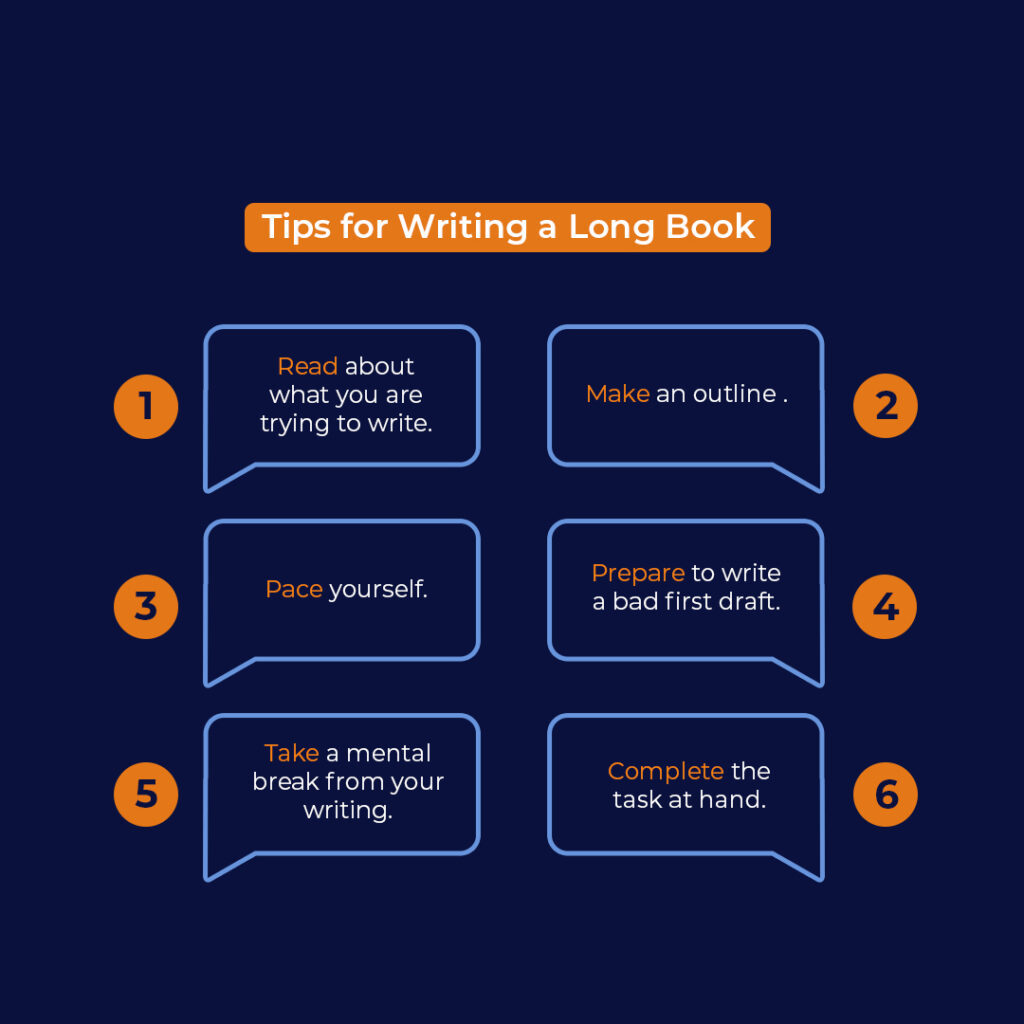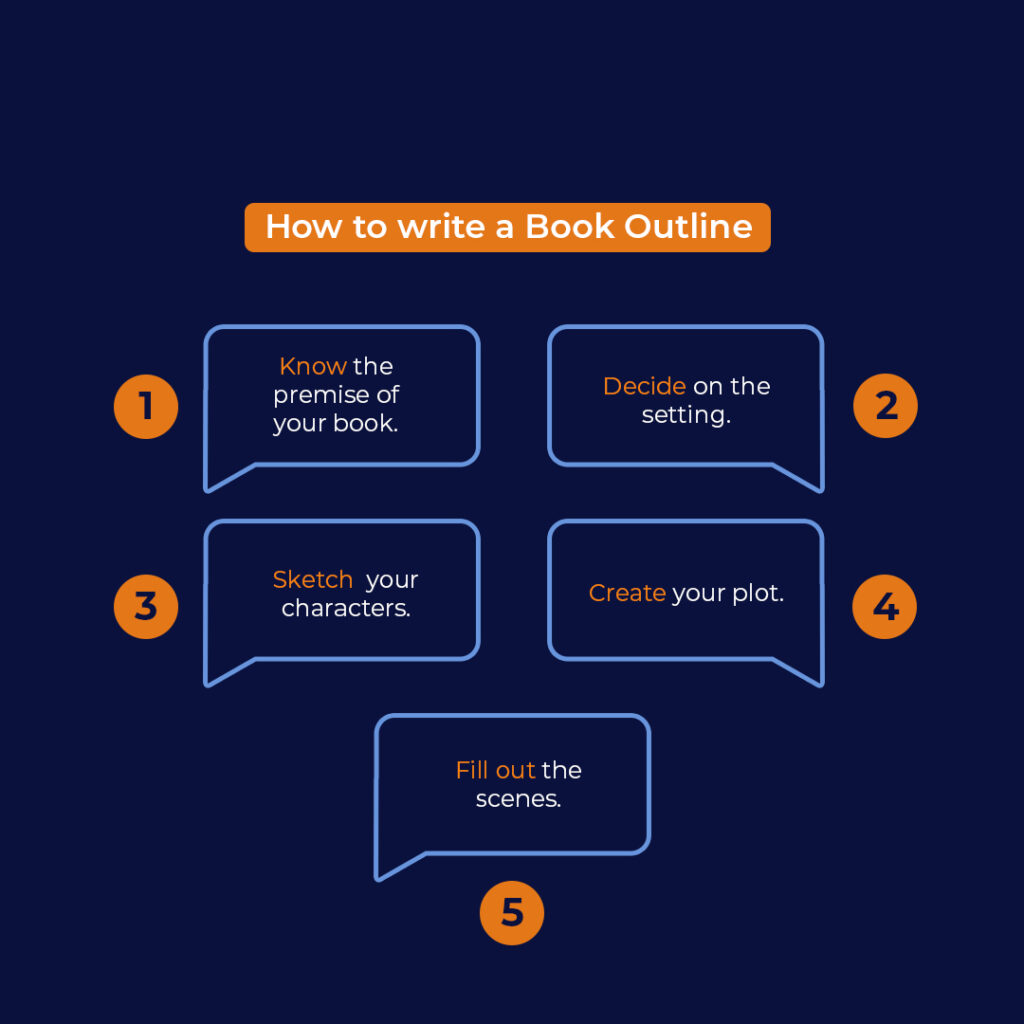
How to Write a Lengthy Book – A Free Comprehensive Guide

Sometimes there is nothing scarier than having to write a lengthy book.
You know that feeling of staring at a blank screen while your cursor blinks at you as your head feels blank? It’s one of the worst feelings that a writer can have. Especially when you have to write a book with an intimidating word count. When you’re in that situation and you finally scribble a few words, you feel triumphant! That is until you check the word count and realize you still have a long, long way to go. Then, disappointed, you lose momentum again. How do you write that lengthy book?
Writing a long book can be very daunting, especially if you are a beginner. Even for experienced writers with a few books under their belt, it takes a lot of motivation, discipline, perseverance, and good technique. But there’s hope. You can write a book with a lengthy word count and no fillers or fluff with the right technique. This write-up will show you how.
But first, let us define what a “lengthy book” is.
What is a Lengthy Book?
A “lengthy” or “long book” would typically be taken as a book that takes a long time to read. It should contain several thousand words, depending on the genre you’re going for.
A book should be long enough to tell the story but also short enough to keep the reader interested. If you’re writing a novel, the general rule of thumb is a word count in a minimum word count of 50,000 to 110,000 range. And generally speaking, a non-fiction book should be between 50,000 to 75,000 words unless the publisher gives different specific requirements.
If those word counts seem daunting, have no fear. There are other forms of prose that are shorter—Flash fiction which is 300 to 1500 words (not lengthy at all). A short story can span 1500 to 30,000 words, and novellas can range from 30,000 to 50,000 words.
Of course, this write-up is about lengthy books, so we are looking at anywhere from 30,000 words and above.
Tips on How to Write a Lengthy Book

Writing a long book can be a lot easier when you follow these tips:
- Read about what you are trying to write
- Make an outline
- Pace yourself
- Prepare to write a bad first draft
- Take a mental break from your writing
- Complete the task at hand
1. Read about what you are trying to write
If you want to write a novel, read novels. If you’re going to write a memoir, read lots of biographies. You learn a lot more about the topic that way.
I remember I once was asked to write a book about weight lifting. Each chapter was at least 3,000 words. And believe me, if I were to write everything I knew about weight lifting, I would have spewed out at most 4,000 words (just a little over one chapter and definitely not up to a fraction of the book).
What did I do? I had to go read some books about weight lifting. And I didn’t just read books; I read articles too. Anything I could lay my hands on. They fueled my knowledge of a niche I knew next to nothing about. And the books helped me with the style the book was supposed to follow as well as the tone.
Your book could be about anything. Whether it’s a historical novel or a non-fiction book about content marketing, the rules stay the same. When you read on your subject matter, you’ll have more knowledge on what to write. So read, do some research, and you won’t be short of words.

2. Make an outline for your long book
An outline is a document that includes essential planning information about your book’s structure, plot, characters, scenes, and more. It is the skeleton of your book. You can divide a book into chapters and decide what to write about in each chapter. That’s an outline.
You can take it a step further and plan the number of words that will fit into each chapter. Let’s use the example of the weightlifting book I wrote. With the total word count divided into chapters, I knew I had 3,000 words to write for each chapter. And each chapter focused on one part of the body or the other, so I knew I had to write 3,000 words on leg muscle exercises and 3,000 on abdomen exercises in another chapter. And like that.
Setting an outline helps you plan what goes where what happens in which chapter of the book.
3. Pace yourself
Make realistic writing goals. Aim for 1,000 or more words every day, depending on what you think you can reasonably accomplish. You’ll be able to overcome the perfectionist bug in your ear if you have to achieve a word count quota.
Nothing, neither procrastination, writer’s block, or even poor writing, should keep you from achieving your goal. Later on, in the editing process, you’ll repair it. Just stay on track with your writing schedule.
4. Prepare to write a bad first draft
Your first draft will be lacking coherence, grammatical correctness, and style. But it will contain the seeds within that will germinate and grow into a much fuller and better second draft.
So write with that in mind now that you have your outline. Flesh out the skeleton and keep moving. That is how to write a book. Trying to revise errors will slow down your momentum. When you’re done with the first draft, you can make corrections where necessary. That’s usually the easy part.
5. Take a mental break from your writing
Writing a long book can get exhausting. Sometimes, you need to take a break. Probably go out for a walk, have a chat with a friend, or even watch a movie unrelated to your subject matter. You can also take a one- or two-hour nap. When you’re down, you’ll feel refreshed and mentally charged enough to take on more work.
In your breaks, you can take notes if any ideas come to your mind. Once you’ve sufficiently rested or distracted yourself, you can work with fresh ideas. Just make sure not to get too much rest, or that can half your progress. One or two hours should do the trick.
6. Complete the task at hand
You will reach a moment in your writing where you will be able to see the full extent of your work when you see the finish line, sprint. The main thing is to keep moving, even when there are other things you would rather do. Try to use those things as a reward for when you reach your target word count for the day. And you’ll finish your book in no time.
How to Write an Outline for Your Lengthy Book

Outlining works wonders when writing lengthy books. This is because outlines assist you in visualizing the larger picture and keep the plot moving forward. They also serve as a roadmap to help you overcome writer’s block when you’re stuck, as well as a clear presentation of character arcs. If you’re writing a novel, your outline can follow these guidelines:
- Know the premise of your book
- Decide on the setting
- Sketch your characters
- Create your plot
- Fill out the scenes
1. Know the premise of your book
Develop is your novel’s central concept. Asking yourself, “What would happen if this or that happened to the protagonist?” is a wonderful method to find the idea.
Then, to assist, build on the assumption and inspire fresh ideas, try answering a few crucial questions. Questions such as:
Who is the main protagonist?
What is the state of affairs?
What will happen to the protagonist from the beginning to the book’s finish?
Write a one-paragraph summary of the novel once you’ve figured out the answers to these questions. Consider it an elevator pitch.
2. Decide on the setting
The setting (place and time) in a story can be just as significant as the characters. Readers need to know the where and why of things that take place.
The setting depends on a variety of factors, depending on the type of story you’re writing. Become well acquainted with your surroundings. Make the most of your research. Find photos, descriptions, and other materials to inspire your ideas if your work is situated in the real world.
3. Sketch your characters
Make character profiles for your characters. Make a mental image of them. Pretend you’re telling your best friend about these characters. What are your thoughts about them? What information would you include, and what information would you leave out—and why? In the narrative, what kind of journey will each character take? What will be their starting point, and what will be their final destination? Who will be crucial to the plot of the work, and who will merely provide color and background?
4. Create your plot
Make a chronology of occurrences. From the beginning to the end, jot down everything that happens in the novel. Include as many details as possible, such as where the events will take place and who will be involved. These bits of info can help form the foundation of additional subplots.
5. Fill out the scenes
You’ll have a clearer understanding of what scenes need to be placed where once you’ve completed your plot outline. Make a note of them in the outline. You should flesh everything out as much as possible, from where the action takes place to who is participating, even dialogue if you already know what you want your characters to say. (Great news, this is where the book gets lengthy!)
Don’t worry about things making sense right now; you’ll have time to go back and highlight anything that doesn’t feel right afterward. Just concentrate on writing everything down so you can see it.
Once you’ve finished your outline, you’ll be free to start writing your first draft, knowing that if you get stuck, you can always refer back to the outline for a refresher. Keep an eye out for logical holes as you start writing. Return to the outline as needed to update storylines, narrative points, and the timeframe.
How Long Does It Take to Write a Book?

A meme I recently saw says something like: If you plan to clean up your room in 30 days, it’ll take you thirty days. But if you plan to do it in 3 hours, that’s how long it will take you.
Now, I’m not suggesting that you can churn out an 80,000-word memoir in three hours. That would necessitate the use of superhuman skills. However, you can establish a timeframe for finishing the book that is acceptable and not overly lenient.
You can set a goal of writing 2,000 pages every day. While doing so constantly is extremely difficult, it is possible with some discipline. Even if you don’t feel like writing, slog through the 2,000 words. And when you do, use your emotions to your favor and even outsmart the target. Aim for 3,000 or 4,000 points.
How to Write a Book—Non-fiction
Non-fiction books also fall into the lengthy book category. It’s no wonder it’s possible to run out of words when writing non-fiction. One thing that can help is researching the topic. But there are some other tips that can make you churn out thousands of words for your non-fiction works. These tips are:
1. Locate your narrative
The first step in coming up with a brilliant book concept is to pay attention to what piques your interest. Podcasts should be listened to. Look into a topic that interests you. Also, be patient with those stray thoughts. You’re severely limiting yourself if you’re only working on information that you find useful right now. You can’t predict what you’ll need later because the pressure is too great. Consider your options and save them for later. Make a back shelf for yourself that’s crammed with all kinds of excellent stuff.
2. Determine your “why” and your audience
Why are you attempting to write this book in particular? Think about the story and figure out exactly what you want to happen. You’ll return to it repeatedly throughout your work.
Your type of audience will shape the kind of book you will write. Are you aiming to reach fantasy novel buffs? What about the self-improvement crowd? Is it a group of academics or a group of casual readers? Holding the audience in mind as you write allows you to customize your message and writing style further.
3. Do your homework
Research and creative thinking are highly necessary when writing. Rely on internet searches as well as the libraries The library is teeming with underutilized librarians whose duty is to assist you. If it makes sense, look around your neighborhood for people who may have experienced the events you want to put in your book and meet with them.
Conclusion
Writing a lengthy book can be challenging. Sometimes you’re at a loss for what to write. Other times you might be intimidated because it’s such a large project. The pointers in this article will help you plan your work and write until you reach your target word count. So fret not, dear writers. And keep writing!




